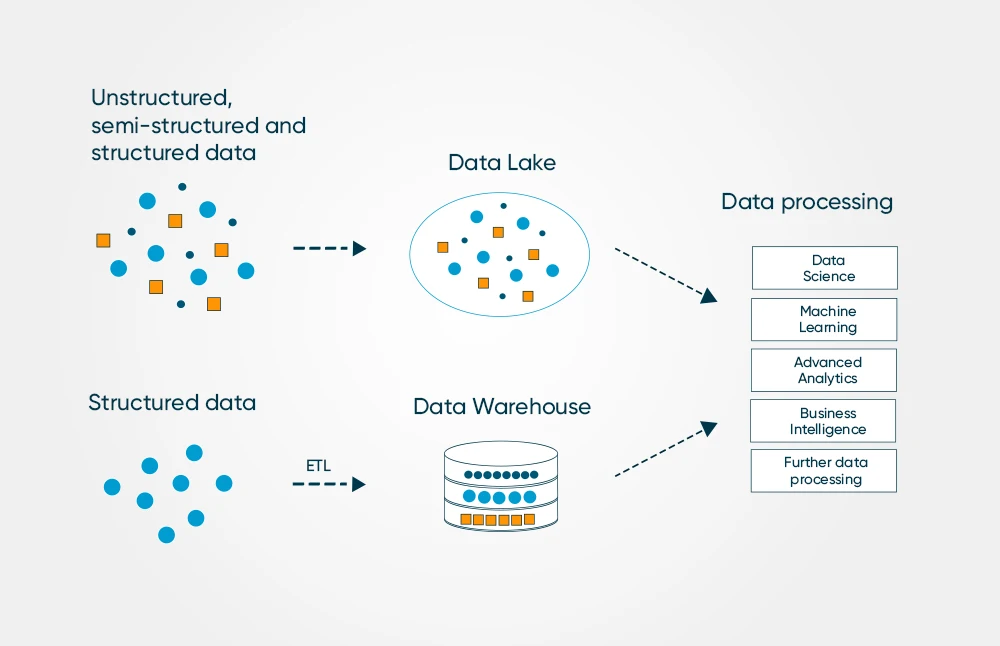Data Lake vs Data Warehouse
Data Lakes and Data Warehouses (DWH) are two distinct approaches to data storage. While a Data Lake stores unstructured (raw) data, a Data Warehouse holds structured and processed data. In this article, we provide a comprehensive overview of the differences between these two technologies.


Data Lake or Data Warehouse?
A Data Warehouse (DWH) is a digital storage system designed to integrate, harmonize, and store large volumes of structured and formatted data from multiple sources. A Data Lake, on the other hand, stores data in its original, raw form without predefined structure or formatting. This approach supports flexible data exploration and analysis.

Differences between Data Lake and DWH
Below is a detailed comparison highlighting essential differences in data structure, users, scalability, and applications:
For more detailed information about each approach, please visit our dedicated pages:
• Explore Data Warehouses
• Everything about Data Lakes
Data Warehouse or Lake – Which is better?
Both Data Lakes and Data Warehouses have significant differences. The best solution depends on factors such as data structure and user requirements. Often, a combination of both provides the most comprehensive coverage of data storage needs. Alternatively, a hybrid approach known as the Data Lakehouse combines the strengths of both architectures.

Data Lake or Data Warehouse – we help you decide
We analyze your requirements and design an architecture that structures your data effectively, makes it accessible and keeps it efficient in the long term.
Schedule a consultationThomas Howert
Founder and Business Intelligence expert for over 10 years.
Discover more articles

Data Lake
A Data Lake captures, stores, and processes vast amounts of data in its original formats.

Data Warehouse
A Data Warehouse is a centralized database designed to collect, transform, and aggregate structured data from various sources such as ERP systems, CRM platforms, databases, and external systems. It serves as a consistent, optimized storage hub for facilitating rapid and efficient data querying and analysis, providing a solid foundation for Business Intelligence, reporting, and analytics.

Data Mesh
Data Mesh architecture is a decentralized Data Management approach that organizes data across individual business domains.

